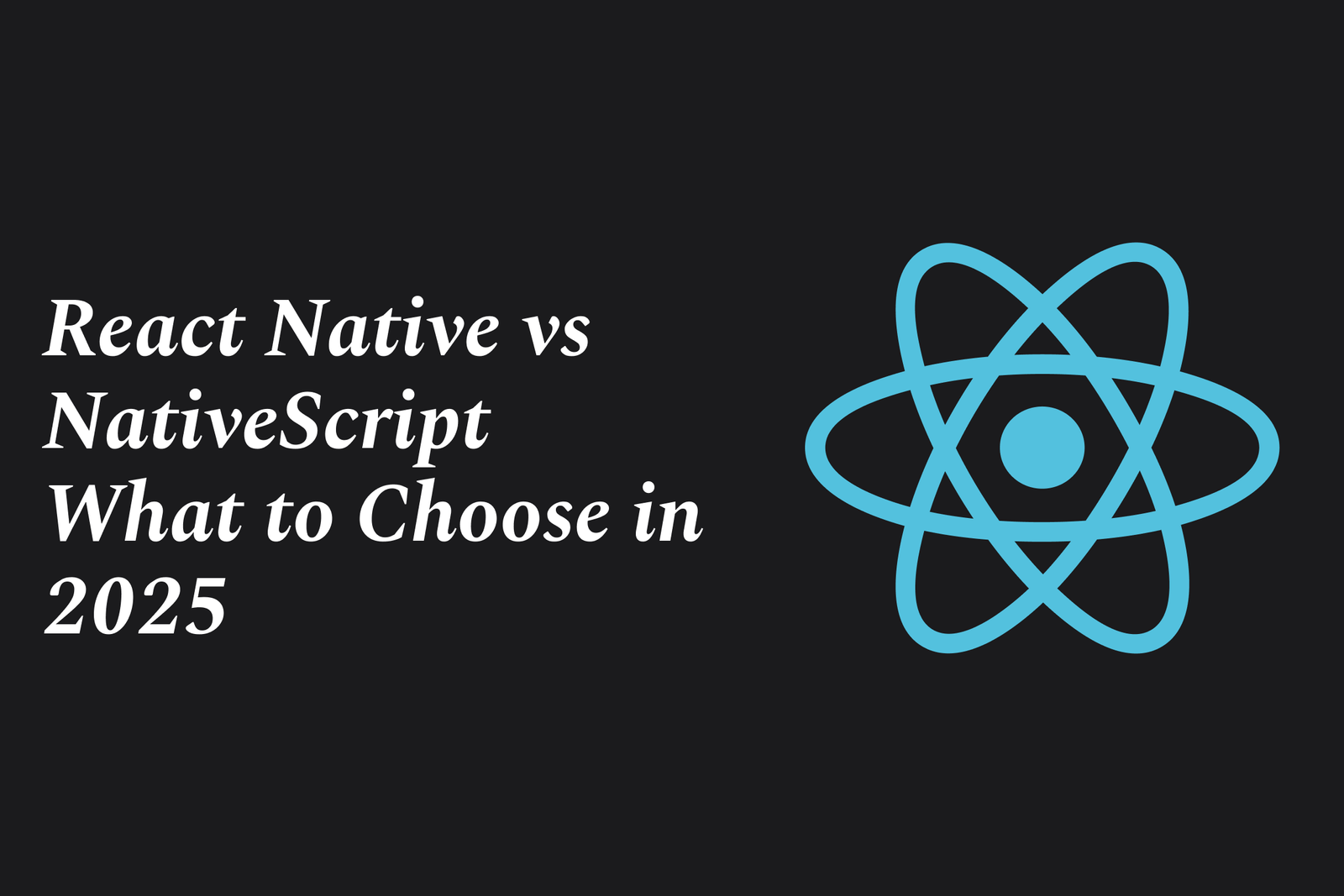React Native vs NativeScript: What to Choose in 2025
React Native and NativeScript are top cross-platform frameworks for 2025. React Native excels with React-based apps and a vast ecosystem, while NativeScript offers unified UI and direct native API access, ideal for Angular/Vue teams needing deep native features. Choose based on your stack.
React Native vs NativeScript: What to Choose in 2025
1 ) Introduction to Cross Platform Mobile Development
Mobile presence is crucial for businesses worldwide, driven by increasing mobile device usage.
Cross platform frameworks like React Native and NativeScript enable building native like apps for iOS and Android using a single codebase.
These frameworks save time and cost versus maintaining separate native apps, while improving performance and user experience compared to earlier mobile web apps.
2 ) Overview of React Native
Developed by Facebook (Meta), React Native allows developers to build iOS and Android apps using JavaScript and React.
Offers “Learn once, write anywhere” approach: shared business logic with platform specific native UI components.
Used extensively by major companies like Instagram, Uber, and Skype.
Supports solutions like React Native for Web and ReactXP for cross platform web versions.
Best suited for teams already using React who want truly native look and feel on multiple platforms.
3 ) Overview of NativeScript
NativeScript is an open source framework using JavaScript, TypeScript, Angular, or Vue.js to build native apps.
Its philosophy is “Write once, run anywhere,” focusing on managing UI consistently across platforms.
Provides real native performance by directly accessing native UI elements without intermediary web views.
Ideal for applications needing native device feature access (camera, GPS, fingerprint) without relying on plugins.
Supports NativeScript Vue, appealing to Vue.js developers.
4 ) Key Comparison Points
Performance: Both deliver native like performance, but NativeScript accesses native UI components directly, avoiding web views, while React Native executes JavaScript with native UI compilation.
Code Sharing: React Native allows sharing business logic but requires separate UI implementations for web; NativeScript promotes a singular UI approach across platforms.
Ecosystem and Community: React Native has a larger, more mature ecosystem with extensive packages and community support. NativeScript has growing community support and rich plugin availability.
Technology Stack: React Native fits seamlessly with React based web projects; NativeScript works well with Angular, Vue.js, or TypeScript stacks.
Access to Native APIs: NativeScript provides direct access to native platform APIs, making advanced native features easier to implement without third party plugins.
5 ) When to Choose React Native
If your project already uses React or you need broad community and library support.
When you prioritize a mature ecosystem and want flexibility with some platform specific coding.
For projects aiming for web app integration using React Native Web or ReactXP.
6 ) When to Choose NativeScript
If your team is skilled in Angular, Vue, or TypeScript and prefers a unified UI codebase.
When you need direct, plugin free access to native device features.
For database driven applications where consistent UI across platforms is essential.
7 ) Conclusion: Making the Right Choice in 2025
Both React Native and NativeScript offer robust, native like cross platform development capabilities.
The choice depends heavily on your existing technology stack, team expertise, and project requirements.
React Native suits projects aligned with React and a need for vast community resources.
NativeScript is preferable if seeking a framework that supports Angular or Vue and emphasizes direct native API access with a unified UI approach.
Consider the scale, maintenance, and desired feature set of your app to select the framework that best fits your business goals for 2025.
https://justacademy.in/news-detail/how-react-native-is-making-foldable-phone-apps-easy
https://justacademy.in/news-detail/dart-3.2:-what’s-new-for-flutter-devs
https://justacademy.in/news-detail/android-system-diagnostics-tools
https://justacademy.in/news-detail/flutter-open-source-tools-roundup
https://justacademy.in/news-detail/android-system-resource-management
Related Posts
Java supports GDPR and data privacy by enabling secure data handling through encryption, controlled access, and precise data management. It allows developers to minimize PII exposure, ensure data confidentiality, and design workflows that comply with data protection regulations effectively.
Java code quality tools have evolved to include advanced static analysis, integrated security checks, and AI-powered code reviews. These updates help developers detect bugs, enforce coding standards, and enhance security, streamlining the development process and improving overall code reliability.
Java remains a cornerstone in big tech companies, evolving with modern features like records, pattern matching, and virtual threads. Its robust ecosystem, enhanced performance, and growing AI integrations keep it vital for both legacy systems and innovative new projects.
Java and CI/CD pipeline optimizations streamline Java application development by automating builds, tests, and deployments. They improve efficiency through parallelization, caching, and secure secrets management, enabling faster feedback loops and more reliable, scalable software delivery.
Java supports modern cryptography standards through its flexible Java Cryptography Architecture (JCA), enabling integration of advanced algorithms like AES, EdDSA, and post-quantum tools. Libraries like Bouncy Castle offer FIPS-certified, hardware-accelerated implementations for secure development.
Java 23 enhances record patterns by enabling concise, direct destructuring of record components within pattern matching, simplifying type checks and data extraction. This improvement boosts code readability and expressiveness by reducing boilerplate in handling immutable data classes.
Java remains a top choice for mobile app backends, powering scalable, secure, and high-performance server-side solutions. Latest trends include cloud-native microservices, reactive programming, and enhanced JVM optimizations, enabling efficient, flexible, and robust mobile backend development.
Java SE 24 and LTS Java SE 21 offer enhanced features and performance, while Apache Spark 4.0.0 introduces Scala 2.13 support and advanced ML and SQL capabilities. Together, they empower developers to build scalable, high-performance data applications with modern tools.
JUnit 5 modernizes Java testing with a modular architecture, improved assertions, and seamless Java 8+ support. Beyond JUnit, tools like Mockito and AssertJ enhance mocking and assertions, creating a powerful, flexible ecosystem for writing clean, efficient Java unit tests.
Java plays a pivotal role in cloud automation tools by providing a robust, platform-independent language used to build scalable automation frameworks like Jenkins and Selenium, enabling efficient CI/CD pipelines, testing, and orchestration across diverse cloud environments.










